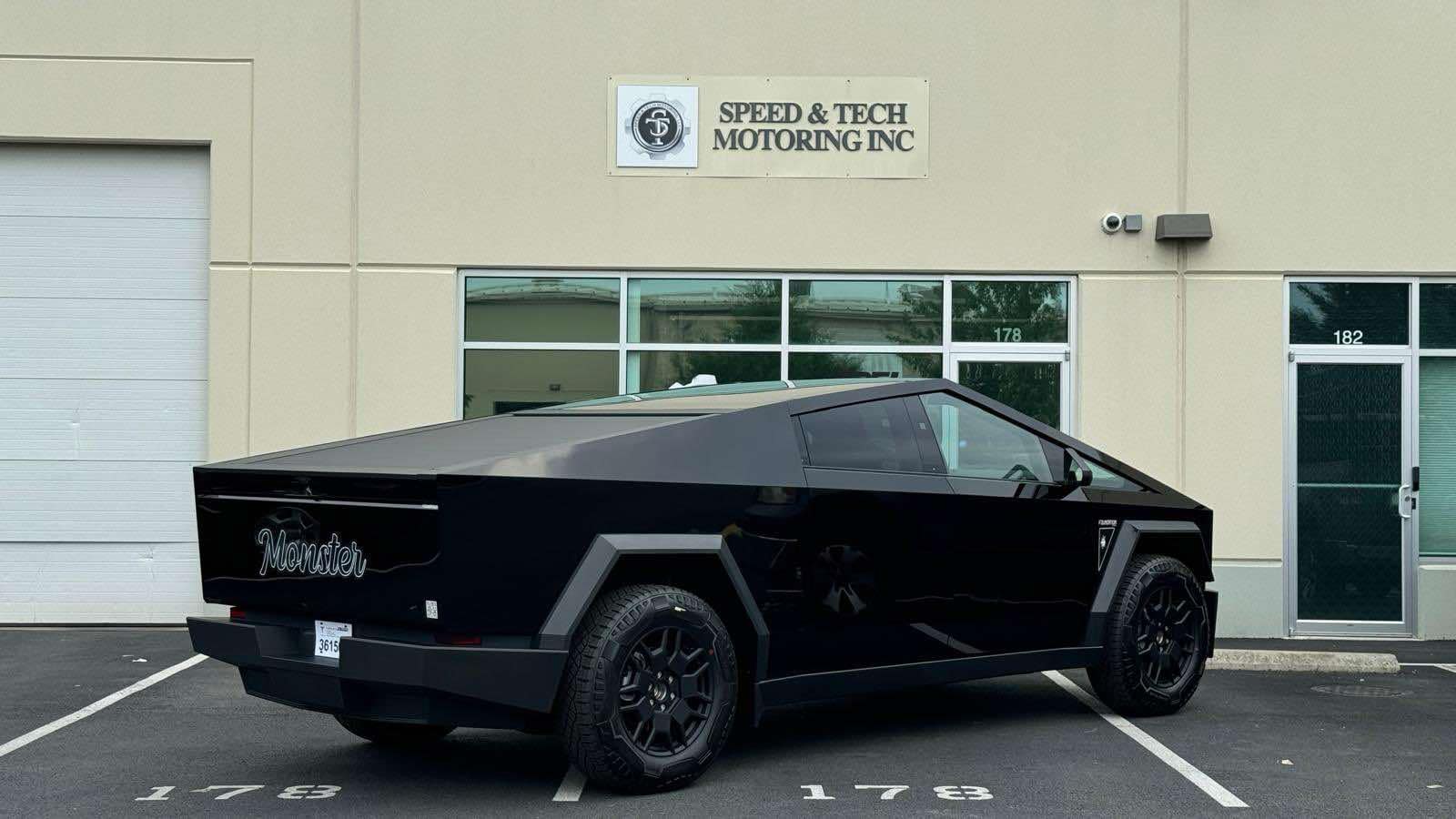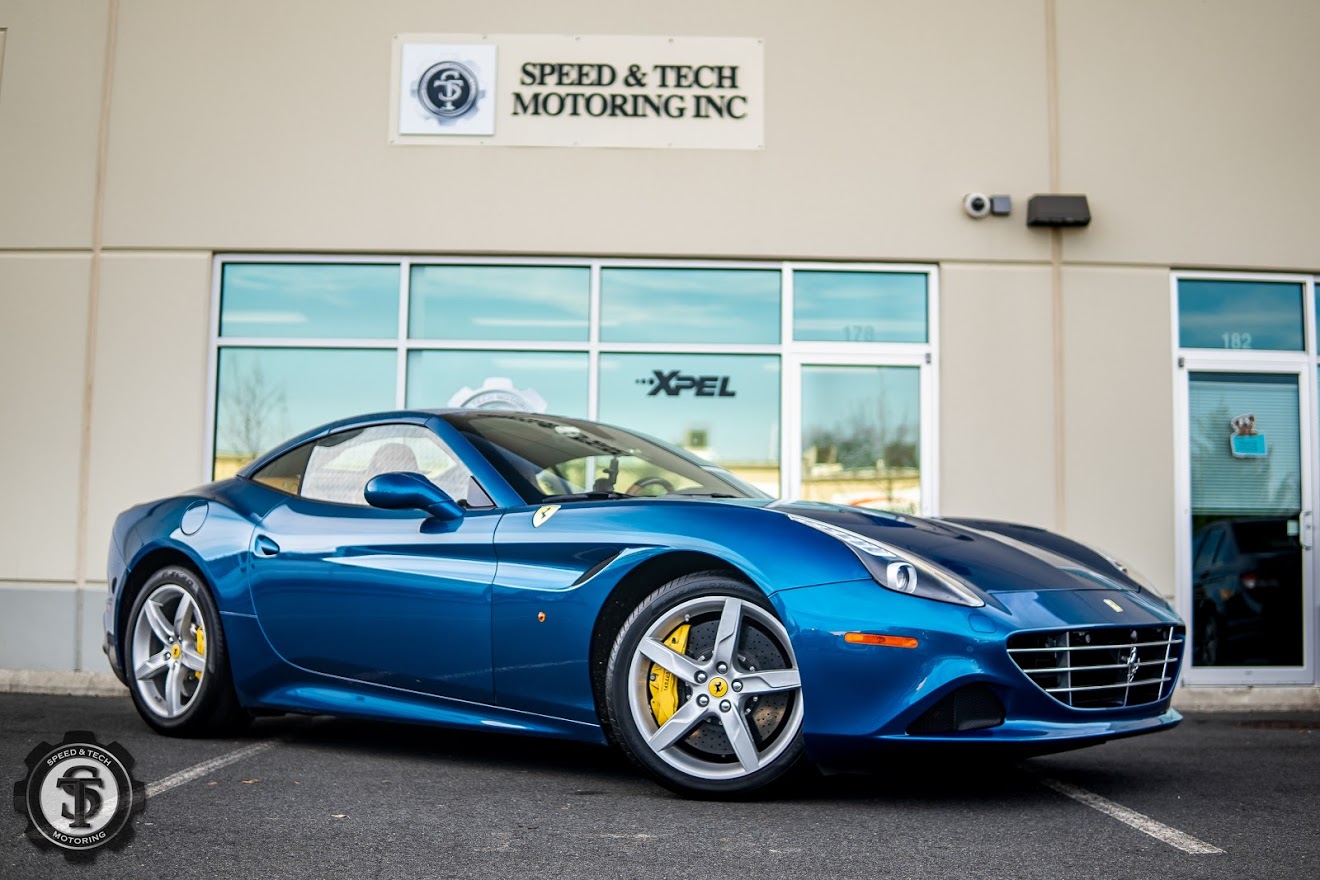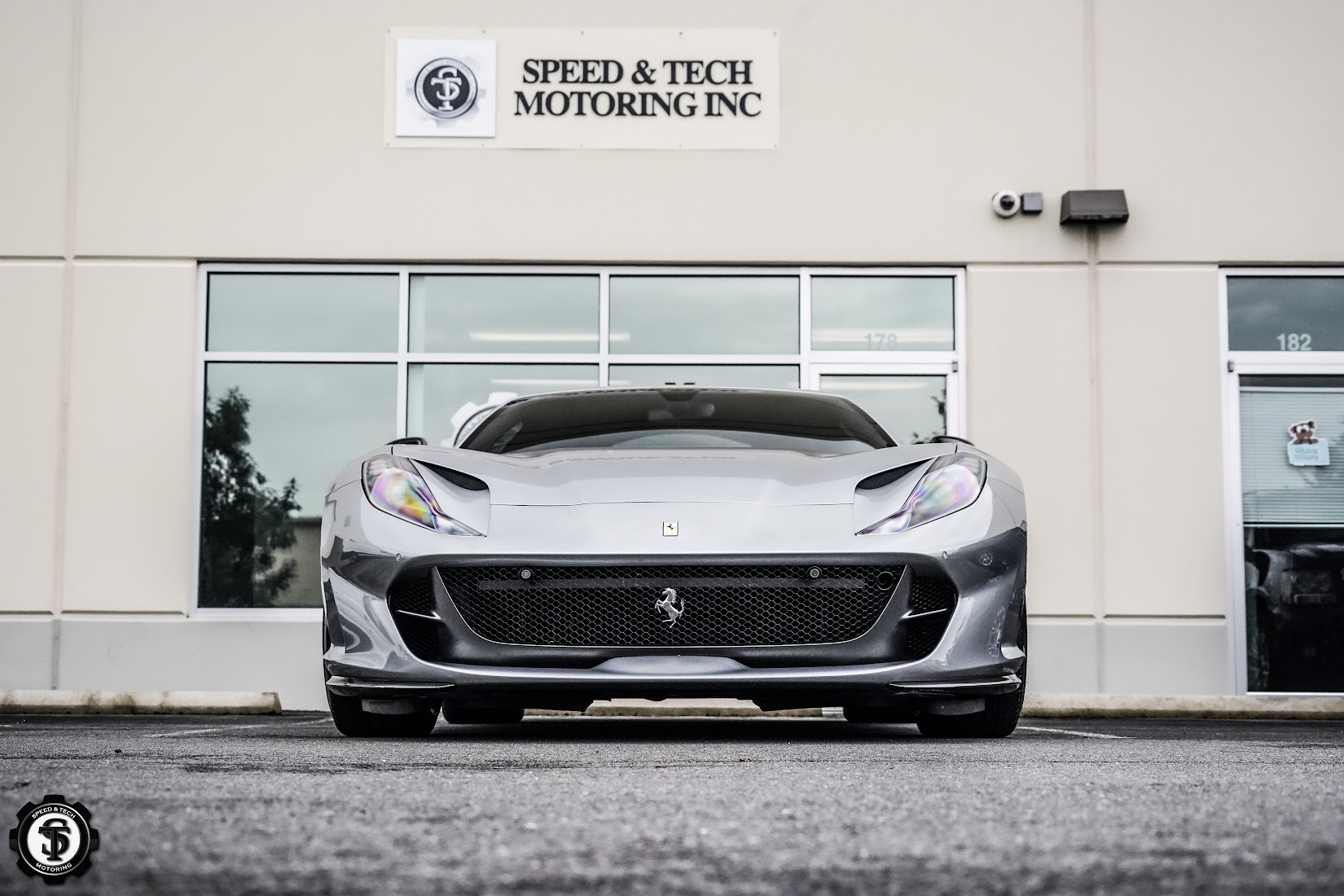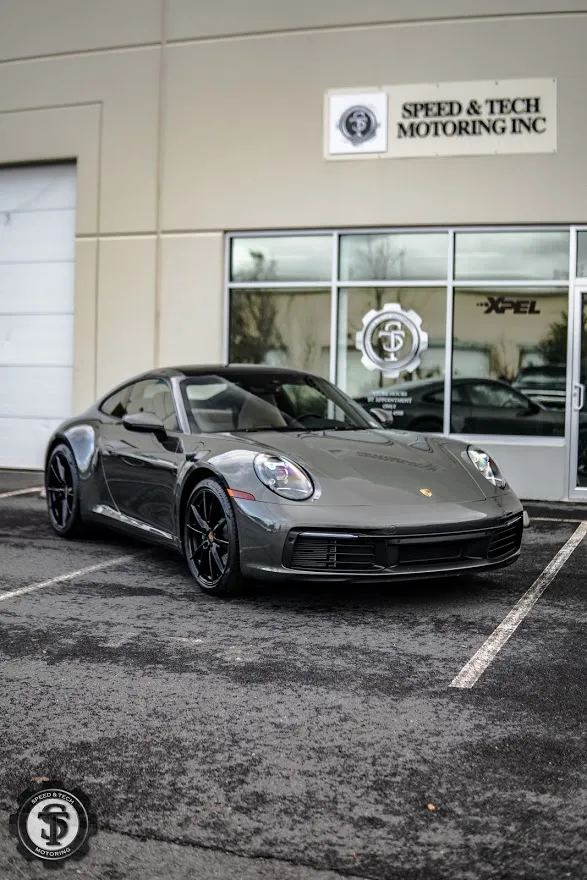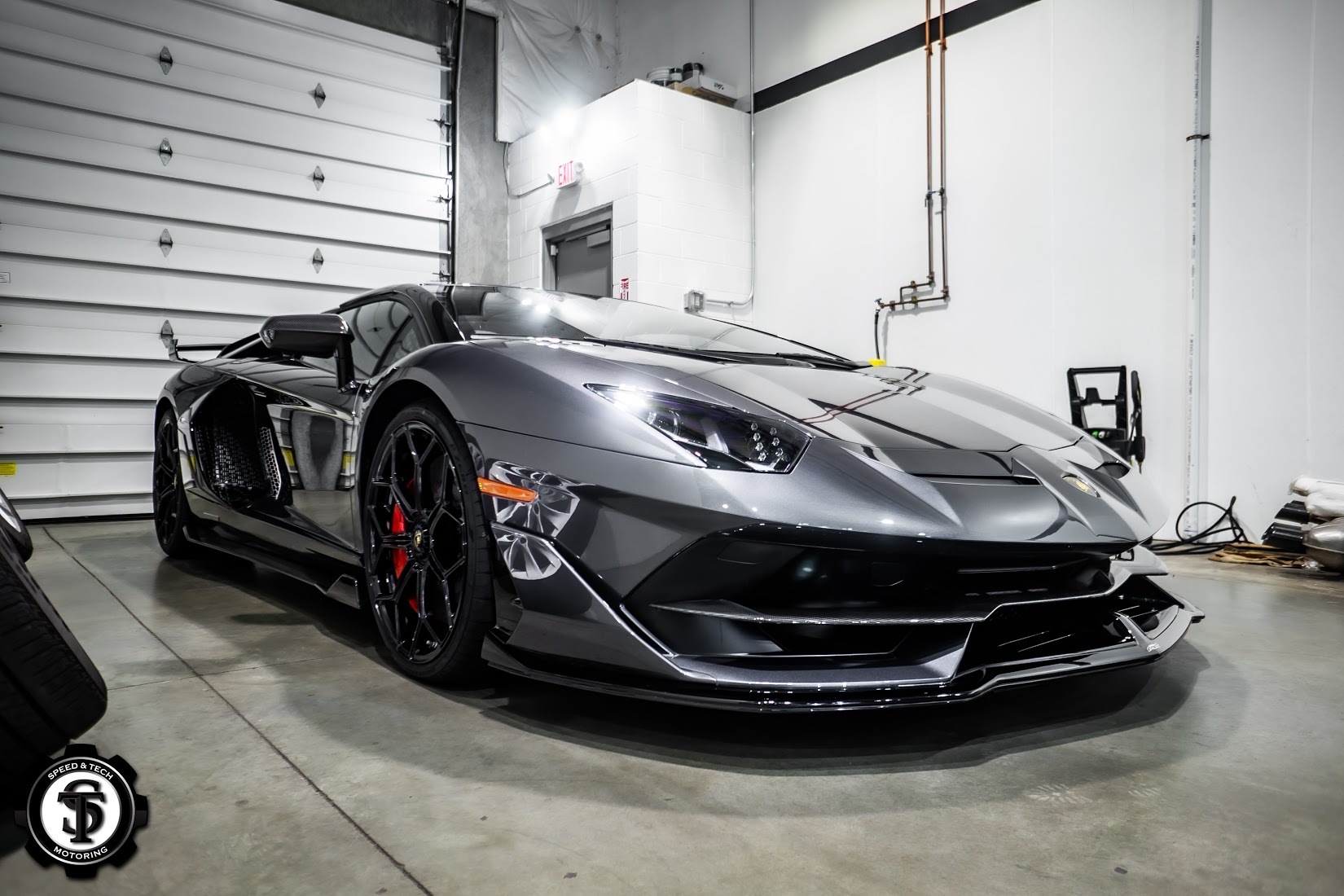Luxury vehicle owners face an important decision. Should you invest in full vehicle PPF cost or choose partial paint protection film coverage? This choice affects your vehicle’s protection and budget significantly.
Both options provide excellent paint protection. The difference lies in coverage area and investment level. Understanding these differences helps you make the right choice for your luxury vehicle.
This compares full vehicle vs partial PPF coverage guide. We’ll examine costs, benefits, and strategic considerations. You’ll discover which option works best for your specific needs and budget.
Understanding PPF Coverage Options
Paint protection film comes in different coverage levels. Each option serves specific protection needs and budgets. Understanding these helps guide your decision.
Full Vehicle PPF Coverage
Full vehicle PPF protects every painted surface. Complete coverage includes all panels, bumpers, and trim pieces. The entire vehicle receives comprehensive protection. No paint remains exposed to damage.
Seamless appearance characterizes full coverage. No visible edge lines interrupt the vehicle’s appearance. The protected area blends perfectly with glass and trim. Professional installation creates invisible protection boundaries.
Maximum protection value comes from complete coverage. Every vulnerable area receives protection. Rock chips cannot damage any painted surface. Road debris impact gets absorbed by the film.
Partial Paint Protection Film Options
Front-end packages protect high-impact areas. Hood, front bumper, and fenders receive coverage. Headlights and mirrors often get included. These areas face the most debris damage.
Custom partial coverage addresses specific needs. Door handle areas prevent fingernail scratches. Rocker panels stop road salt protection damage. Rear bumper coverage prevents loading scratches.
Strategic placement maximizes protection value. High-wear areas get priority coverage. Cost-effective protection focuses on damage-prone zones. Budget constraints guide coverage decisions.
Full Vehicle PPF Cost Analysis
Complete vehicle protection represents a significant investment. Understanding costs helps budget appropriately for maximum protection.
Luxury Vehicle Full Coverage Pricing
BMW full vehicle PPF ranges $4,200-6,500. Compact sedans like the 3 Series start around $4,200. Large SUVs like the X7 reach $6,500. Complex M-series vehicles cost more due to aerodynamic elements.
Porsche complete protection costs $4,800-7,200. 911 models typically cost $4,800-5,500. Cayenne SUVs range $5,500-6,200. GT models with extensive aerodynamics reach $7,200.
Tesla full coverage ranges $3,800-5,200. Model 3 protection starts at $3,800. Model S and X cost $4,500-4,800. Model Y falls between sedan and SUV pricing.
Ferrari full protection costs $6,500-9,500. 488 GTB models start around $6,500. Complex models like the SF90 reach $9,500. Limited production vehicles require custom pricing.
Lamborghini complete coverage ranges $6,800-10,200. Aventador protection starts at $6,800. Huracán models cost $6,200-7,500. Limited editions with complex bodywork cost significantly more.
Full Coverage Cost Factors
Vehicle complexity affects installation time. Simple sedan designs install faster. Complex curves and aerodynamics increase labor. Exotic vehicles demand expert precision.
Paint quality influences preparation requirements. Perfect factory paint accepts film immediately. Swirl marks or defects need correction first. Paint correction adds $800-2,500 to total cost.
Film quality affects material pricing. Premium XPEL films cost $8-12 per square foot. Budget options start at $5-7 per square foot. Quality differences impact longevity significantly.
Installation Time Considerations
Full vehicle installation requires 3-5 days typically. Complex vehicles need additional time. Rush jobs compromise quality significantly. Proper curing time cannot be shortened.
Weather conditions affect installation schedules. Humidity and temperature must be controlled. Professional facilities ensure optimal conditions. Delays protect installation quality.
Quality control extends installation time. Perfect results require careful inspection. Bubble elimination takes patience. Edge sealing demands precision work.
Partial Paint Protection Film Strategies
Strategic partial coverage maximizes protection value within budget constraints. Smart placement addresses the most vulnerable areas effectively.
High-Impact Zone Protection
Front bumper coverage stops most road debris. Lower bumper faces constant rock bombardment. Coverage extends to fog light areas. Side air intakes receive protection too.
Hood protection prevents highway damage. High-speed debris hits hoods hardest. Coverage extends to hood edges completely. Windshield washer areas get included.
Fender coverage protects wheel well areas. Tire spray carries abrasive particles. Front fenders face maximum exposure. Coverage wraps around wheel openings.
Partial Coverage Pricing
BMW front-end packages cost $1,800-2,800. Basic coverage includes bumper, hood, and fenders. Extended packages add mirrors and lights. M-series vehicles cost more due to complexity.
Porsche partial protection ranges $2,200-3,400. 911 front-end coverage starts at $2,200. Cayenne packages cost more due to size. Track-focused coverage adds aerodynamic elements.
Tesla partial coverage costs $1,600-2,400. Model 3 basic packages start at $1,600. Performance models need additional coverage. Supercharging frequent users benefit from extended protection.
Exotic vehicle partial coverage starts at $2,800. Ferrari and Lamborghini front-ends cost more. Complex designs increase installation time. Custom packages address specific needs.
Strategic Partial Options
Door handle protection prevents daily damage. Fingernails scratch paint during normal use. Small film pieces provide targeted protection. Installation takes minimal time and cost.
Rocker panel coverage stops road salt damage. Lower body areas face constant contamination. Winter driving creates severe exposure. Protection prevents permanent staining.
Rear bumper protection helps loading activities. Golf bags and luggage cause scratches. Loading and unloading create daily risks. Strategic coverage prevents expensive repairs.
Coverage Decision Framework
Choosing between full and partial coverage requires careful analysis. Several factors influence the optimal decision for your situation.
Vehicle Usage Patterns
Daily commuter vehicles benefit from full coverage. Highway driving exposes all surfaces to debris. Parking lot risks affect doors and panels. Complete protection provides peace of mind.
Weekend vehicles may justify partial coverage. Limited exposure reduces damage probability. Garage storage minimizes environmental risks. Budget allocation can focus on high-impact areas.
Track vehicles need comprehensive protection. Racing events multiply debris exposure significantly. Aerodynamic elements face unique risks. Full coverage becomes essential for performance driving.
Budget Considerations
Full coverage provides maximum value long-term. Complete protection prevents all paint damage. Resale value benefits justify higher investment. No future expansion decisions needed.
Partial coverage allows phased investment. Initial protection covers high-risk areas. Additional coverage can be added later. Budget flexibility helps cash flow management.
Cost per square foot decreases with full coverage. Bulk pricing reduces material costs. Installation efficiency improves with larger jobs. Overall value increases with complete coverage.
Aesthetic Preferences
Full coverage creates seamless appearance. No visible edge lines interrupt vehicle design. Professional installation appears factory-applied. Resale appeal maximizes with invisible protection.
Partial coverage may show edge lines. Visible transitions between protected and unprotected areas. Professional installation minimizes visibility. Some owners prefer knowing protected areas.
Blend lines require expert installation. Feathering techniques hide transitions. Poor installation creates obvious lines. Professional skill level affects aesthetic results.
Vehicle-Specific Coverage Recommendations
Different luxury vehicles have unique protection needs. Understanding these helps optimize coverage decisions.
BMW Coverage Strategy
BMW 3 Series benefits from front-end focus. Sedan design limits upper body exposure. Daily commuter use justifies hood and bumper protection. Cost-effective approach for practical owners.
BMW M5 performance demands full coverage. Track capability increases exposure risks. Aggressive driving multiplies debris impact. Complete protection preserves performance vehicle value.
BMW X7 SUV needs comprehensive protection. Large surface area presents bigger target. Family use increases damage probability. Full coverage protects significant investment appropriately.
Porsche Protection Planning
Porsche 911 sports cars face unique risks. Low profile increases road debris impact. Curved surfaces complicate partial coverage. Full protection optimizes investment protection.
Porsche 911 GT3 RS requires complete coverage. Track-focused vehicles see extreme conditions. Aerodynamic elements face specialized risks. Comprehensive protection becomes essential investment.
Porsche Cayenne SUV allows flexible approaches. Family use patterns vary significantly. Partial coverage may suffice for careful owners. Full protection maximizes luxury SUV value.
Tesla Electric Vehicle Considerations
Tesla Model 3 volume sales justify smart coverage. High daily use increases exposure probability. Soft paint requires professional protection. Front-end focus provides excellent value.
Tesla Model S luxury positioning suggests full coverage. Premium vehicle commands complete protection. Business use demands pristine appearance. Investment level justifies comprehensive coverage.
Tesla Model X falcon doors need special attention. Unique mechanisms require expert installation. Door operation cannot be compromised. Full coverage protects complex investment.
Ferrari Exotic Protection
Ferrari 488 GTB demands complete coverage. Collector value requires perfect condition. Any paint damage affects value dramatically. Full protection preserves investment appropriately.
Ferrari SF90 hybrid technology increases complexity. Advanced systems require expert installation. Complete coverage protects cutting-edge investment. Partial coverage risks inadequate protection.
Lamborghini Investment Protection
Lamborghini Aventador angular design complicates partial coverage. Complex curves require expert installation. Full coverage ensures complete protection. Partial options may leave vulnerabilities.
Lamborghini ownership involves events and shows. Perfect appearance becomes essential requirement. Full coverage maintains showroom condition. Investment protection justifies complete coverage.
Long-Term Value Analysis
Protection coverage decisions affect long-term vehicle value. Understanding these impacts helps justify investment levels.
Resale Value Impact
Full coverage maximizes resale appeal. Complete protection ensures consistent paint condition. No unprotected areas show wear patterns. Buyers prefer comprehensive protection history.
Partial coverage still adds resale value. Protected areas maintain perfect condition. Documentation shows owner care level. Value increase justifies protection investment.
Protection history documentation matters. Professional installation records add credibility. Warranty coverage provides buyer confidence. Maintenance records show proper care.
Paint Condition Preservation
Full coverage prevents all paint aging. UV protection maintains color consistency. No fade lines develop between areas. Original condition preservation maximizes value.
Partial coverage creates protection boundaries. Protected areas stay perfect longer. Unprotected areas age naturally. Contrast becomes visible over time.
Professional installation quality affects results. Expert work ensures invisible boundaries. Poor installation creates obvious transitions. Quality investment protects aesthetic appeal.
Maintenance Cost Differences
Full coverage reduces maintenance requirements. Protected paint stays cleaner longer. Washing frequency decreases significantly. Professional detailing needs reduce.
Partial coverage simplifies care routines. Protected areas require minimal maintenance. Unprotected areas need traditional care. Mixed approach requires attention to differences.
Long-term maintenance savings accumulate. Reduced washing and polishing costs add up. Professional correction becomes unnecessary. Protection investment pays ongoing dividends.
Installation Quality Considerations
Professional installation quality affects both full and partial coverage success. Understanding these factors ensures optimal results.
Installer Expertise Requirements
Full coverage demands advanced skills. Complete vehicle installation challenges experts. Complex curves require specialized techniques. Experience level affects final results significantly.
Partial coverage allows skill development. Smaller projects provide learning opportunities. Focused areas enable perfection practice. Quality improvement benefits from experience.
Luxury vehicle expertise becomes essential. BMW, Porsche, and exotic vehicles require specialized knowledge. Factory paint systems vary significantly. Expert understanding prevents damage.
Quality Control Standards
Full coverage requires comprehensive inspection. Every panel demands perfect installation. Bubble elimination takes significant time. Edge sealing affects entire vehicle.
Partial coverage enables focused attention. Limited areas receive concentrated effort. Quality control becomes more manageable. Perfection is easier to achieve.
Professional standards ensure warranty coverage. Certified installation protects investment. Poor work voids manufacturer warranties. Quality investment protects long-term value.
Facility Requirements
Climate control affects installation success. Temperature and humidity must be controlled. Professional facilities ensure optimal conditions. Quality results require proper environment.
Professional lighting reveals imperfections. High-quality lighting shows defects immediately. Correction happens during installation. Perfect results require proper illumination.
Clean environment prevents contamination. Dust particles create visible defects. Professional facilities maintain cleanliness. Contamination prevention ensures quality results.
Timing and Scheduling Considerations
Installation timing affects both coverage options differently. Understanding these helps plan appropriately.
New Vehicle Timing
Immediate protection provides maximum value. Perfect factory paint accepts film optimally. No existing damage complicates installation. Protection begins from first drive.
Delivery coordination streamlines process. Direct dealer delivery to installer saves time. Protection happens before first exposure. Perfect condition ensures optimal results.
Factory warranty considerations matter. Protection doesn’t void vehicle warranties. Professional installation prevents paint damage. Documentation protects warranty coverage.
Existing Vehicle Preparation
Paint condition assessment determines requirements. Existing damage needs correction first. Paint correction adds time and cost. Perfect preparation ensures optimal adhesion.
Surface contamination removal requires expertise. Wax and sealers must be eliminated. Soft paint requires gentle cleaning. Professional preparation prevents installation failure.
Realistic timeline planning prevents disappointment. Quality installation cannot be rushed. Weather delays may occur. Patience ensures perfect results.
Seasonal Timing Benefits
Winter installation offers advantages. Reduced demand may lower pricing. Scheduling flexibility improves availability. Indoor installation protects from weather.
Spring preparation provides protection benefits. Fresh protection handles summer UV exposure. Road salt removal precedes installation. Perfect timing maximizes protection value.
Summer demand increases scheduling challenges. Popular installation season creates delays. Premium pricing may apply. Early booking secures preferred timing.
Cost-Benefit Analysis Tools
Smart coverage decisions require careful analysis. These tools help evaluate options objectively.
Protection Value Calculation
Damage probability assessment guides decisions. Daily highway driving increases risks. Parking conditions affect exposure levels. Usage patterns influence optimal coverage.
Repair cost analysis justifies investment. Single panel repainting costs $800-1,500. Multiple repairs quickly exceed protection cost. Prevention value becomes clear.
Resale value impact multiplies benefits. Protected paint commands premium pricing. Original condition increases buyer appeal. Value preservation justifies investment.
Budget Planning Strategies
Financing options enable full coverage. Payment plans make comprehensive protection affordable. Business expenses may qualify for deductions. Investment timing flexibility helps.
Phased installation allows budget spreading. Initial high-impact area protection starts immediately. Additional coverage phases spread costs. Final result achieves complete protection.
Package deals provide value advantages. Combined services reduce overall costs. Ceramic coating integration saves money. Window tint packages create value.
Maintenance Differences
Full and partial coverage require different maintenance approaches. Understanding these ensures optimal performance.
Cleaning Considerations
Full coverage simplifies maintenance routines. Entire vehicle receives identical care. PPF-safe products work everywhere. Consistent approach ensures results.
Partial coverage requires mixed approaches. Protected areas need PPF-safe products. Unprotected areas use traditional methods. Attention to differences prevents damage.
Professional maintenance varies by coverage. Full protection enables comprehensive service. Partial coverage requires targeted attention. Service approach adapts to protection level.
Product Selection
PPF-safe cleaners work on all coverage types. Quality products prevent film damage. Gentle formulations protect soft paint. Professional products ensure compatibility.
Traditional products may damage film. Harsh chemicals affect PPF performance. Solvent-based products cause failures. Proper product selection prevents problems.
Professional guidance prevents mistakes. Expert recommendations ensure success. Product compatibility charts help selection. Manufacturer guidelines provide direction.
Long-Term Care
Regular inspection prevents problems. Early detection enables correction. Professional evaluation identifies issues. Proactive care extends protection life.
Warranty maintenance ensures coverage. Required care protects investment. Documentation proves compliance. Professional service maintains warranties.
Replacement planning guides decisions. Protection life varies by exposure. Replacement timing affects costs. Planning enables budget preparation.
Frequently Asked Questions
How much does full vehicle PPF cost compared to partial?
Full vehicle PPF cost ranges $4,200-10,200 for luxury vehicles, while partial paint protection film costs $1,600-3,400. Full coverage costs 2.5-3 times more than partial but provides complete protection. The price difference reflects material quantity and installation complexity.
Which coverage option provides better value?
Full coverage provides maximum long-term value through complete protection and higher resale value. Partial coverage offers better immediate value for budget-conscious owners. Daily drivers benefit more from full coverage, while occasional-use vehicles may justify partial protection.
Can partial coverage be expanded to full coverage later?
Yes, partial coverage can be expanded to full vehicle protection. However, expanding coverage costs more than initial full installation.Color matching and edge blending require expert skills. Planning full coverage from the start usually provides better value.
How do you decide between full and partial PPF?
Consider vehicle usage, budget, and protection goals. Daily highway drivers need full coverage for maximum protection. Weekend vehicles may justify partial coverage focusing on high-impact areas. Budget flexibility and long-term plans influence optimal decisions.
Does partial coverage show visible edge lines?
Professional partial coverage minimizes visible edge lines through expert installation techniques. Feathering and strategic placement reduce visibility. Full coverage eliminates edge lines completely. Installation quality significantly affects aesthetic results.
Which luxury vehicles benefit most from full coverage?
Exotic vehicles like Ferrari and Lamborghini benefit most from full coverage due to high repair costs and collector value. Performance vehicles like Porsche GT models need complete protection for track use. Daily-driven luxury cars justify full coverage through exposure levels.
How long does each coverage option take to install?
Partial coverage installation takes 1-2 days typically. Full vehicle coverage requires 3-5 days for proper installation. Complex vehicles need additional time. Quality installation cannot be rushed regardless of coverage level.
What’s the resale value difference between coverage options?
Full coverage typically adds $4,000-8,000 to resale value for luxury vehicles. Partial coverage adds $2,000-4,000 depending on area coverage. Complete protection provides maximum buyer appeal. Documentation of professional installation increases value.
Can you mix partial coverage on different vehicle areas?
Yes, custom partial coverage can protect specific high-risk areas like door handles, rocker panels, and rear bumpers. Strategic placement maximizes protection value within budget constraints. Professional consultation optimizes coverage placement.
Does insurance cover paint protection film?
Most insurance doesn’t cover PPF installation costs. Some insurers offer discounts for protected vehicles. PPF prevents claims that could raise premiums. Protection reduces long-term insurance costs through damage prevention.
How do maintenance costs differ between options?
Full coverage reduces overall maintenance costs through complete paint protection film. Partial coverage requires mixed maintenance approaches. Protected areas need less care than unprotected paint. Long-term savings favor full coverage.
Which coverage works best for leased vehicles?
Partial coverage often works well for leased vehicles due to lower initial investment. Front-end protection prevents most lease return charges. Full coverage maximizes protection but may exceed lease term value. Budget allocation guides optimal decisions.
Conclusion
Full vehicle PPF vs partial coverage decisions require careful consideration of multiple factors. Both options provide excellent paint protection when professionally installed. The choice depends on budget, usage patterns, and protection goals.
Full coverage delivers maximum protection and resale value. Complete paint preservation justifies higher investment for daily drivers and exotic vehicles. Seamless appearance and comprehensive protection provide ultimate peace of mind.
Partial paint protection film offers strategic protection within budget constraints. Smart placement protects high-impact areas effectively. This approach works well for careful owners and weekend vehicles.
Sterling area luxury vehicle owners benefit from professional guidance. Local climate and traffic conditions influence optimal coverage decisions. Expert consultation ensures the right choice for your specific needs.
BMW, Porsche, Tesla, Ferrari, and Lamborghini owners see significant value from professional protection. Each brand faces unique challenges that proper coverage addresses effectively. Investment protection becomes essential for luxury vehicle ownership.
Ready to choose the perfect PPF coverage for your luxury vehicle? Speed and Tech Motoring provides expert guidance on full vehicle and partial paint protection film options. Our certified technicians understand the unique needs of BMW, Porsche, Tesla, Ferrari, and Lamborghini vehicles perfectly.
Call Speed and Tech Motoring at (703) 565-4508 for your personalized coverage consultation and quote. Visit us at 23585 Overland Dr STE 178, Sterling, VA. Discover which paint protection strategy delivers optimal value for your luxury vehicle investment.
Your vehicle deserves the perfect protection plan. Make the smart coverage decision today.



